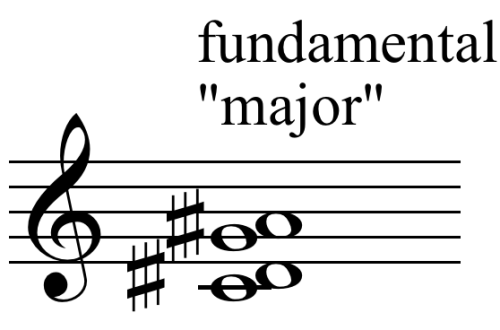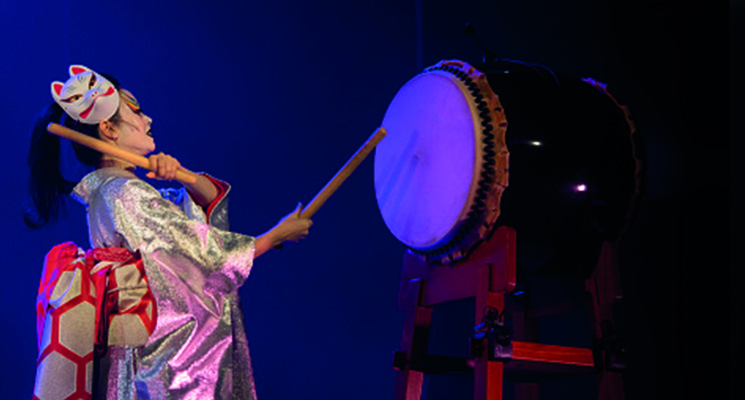
Traditional music of Japan: national instruments, songs and dances
Contents
The traditional music of Japan was formed under the influence of China, Korea and other countries of Southeast Asia. Those forms of music that existed in Japan before the invasion of neighboring traditions have hardly survived.
Therefore, the Japanese musical tradition can be safely considered a synthesis of all the phenomena that penetrated into it, which over time acquired unique national features.
Main themes in the content of folklore
Japanese folklore is influenced by two religions: Buddhism and Shintoism. The main themes of Japanese legends are supernatural characters, spirits, animals with magical powers. Also an important part of folklore are instructive stories about gratitude, greed, sad stories, witty parables and humoresques.
The task of art is to worship nature, the task of music is to become part of the surrounding world. Therefore, the composer’s thought is subordinated not to the expression of an idea, but to the transfer of states and natural phenomena.
Symbols of Japanese culture
The first association with Japan is sakura (Japanese cherry). In the country there is a special ceremony of admiring its flowering – khans. The tree is repeatedly sung in Japanese haiku poetry. Japanese folk songs reflect the similarity of natural phenomena with human life.
The crane is not inferior in popularity to sakura – a symbol of happiness and longevity. It is not for nothing that the Japanese art of origami (folding paper figures) has become popular all over the world. To make a crane means to attract good luck. The image of the crane is present in many Japanese songs. Other symbols are also taken from the outside world. The symbolism of Japanese culture is natural symbolism.

Major song and dance genres
Like other peoples, Japanese folk music has evolved from ancient magical forms to secular genres. The formation of most of them was influenced by Buddhist and Confucian teachings. The main classification of Japanese music genres:
- religious music,
- theatrical music,
- gagaku court music,
- folk everyday songs.
The oldest genres are considered Buddhist chants shomyo and court music gagaku. Themes of religious chants: Buddhist doctrine (kada), teaching tenets (rongi), pilgrimage hymns (goeika), songs of praise (vasan). Shinto music – music to please the gods, short cycles of songs and dances in costumes.
The secular genre includes court orchestral music. Gagaku is an ensemble from China that performs instrumental (kangen), dance (bugaku), and vocal (wachimono) music.
Japanese folk dances originate in ritual actions. The dance is a strange sharp movement of the arms and legs, the dancers are characterized by twisted facial expressions. All movements are symbolic and understandable only to the initiates.
There are two types of modern Japanese dance: odori – everyday dance with sharp movements and jumps, and mai – a more lyrical dance, which is a special prayer. The odori style gave rise to the kabuki dance, and later to the world-famous theater. The mai style formed the basis of the Noh theatre.
About 90% of the music of the land of the rising sun is vocal. Important genres of folk music-making are song tales, songs accompanied by koto, shamisen and ensembles, ritual folk songs: wedding, work, holiday, children’s.
The most famous Japanese song among folk pearls is song “Sakura” (that is, “Cherry”):
DOWNLOAD MUSIC – DOWNLOAD


musical instruments
Almost all of the ancestors of Japanese musical instruments were brought to the islands from China or Korea in the 8th century. The performers note only the external resemblance of the instruments to European and Asian models; in practice, sound extraction has its own characteristics.
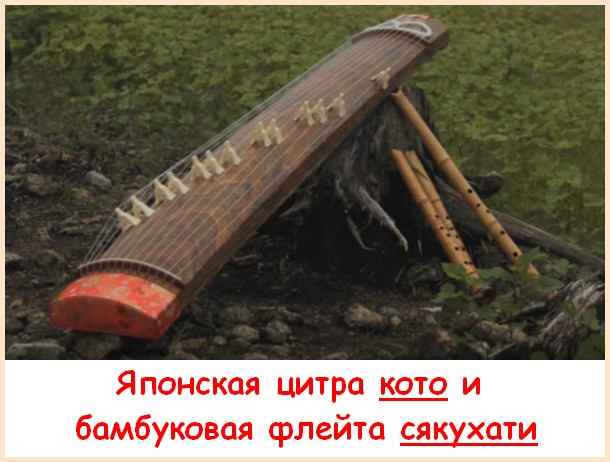

Koto – Japanese zither, a stringed instrument that personifies the dragon. The body of the koto has an elongated shape, and when viewed from the side of the performer, the head of the sacred animal is on the right, and its tail is on the left. Sound is extracted from silk strings with the help of fingertips, which are put on the thumb, index and middle fingers.
Siamese – a stringed plucked instrument similar to the lute. It is used in the traditional Japanese Kabuki theater and is a hallmark of Japanese culture: the colorful sound of the shamisen in ethnic music is as symbolic as the sound of the balalaika in Russian music. Shamisen is the main instrument of itinerant goze musicians (17th century).


to shake – Japanese bamboo flute, one of the representatives of the group of wind instruments called fue. The extraction of sound on a shakuhachi depends not only on the air flow, but also on a certain angle of inclination of the instrument. The Japanese tend to animate objects, and musical instruments are no exception. It can take several months to tame a shakuhachi spirit.
Taiko – drum. The tool was indispensable in military operations. A certain series of blows to the taiko had its own symbolism. Drumming is spectacular: in Japan, both the musical and theatrical aspects of a performance are important.
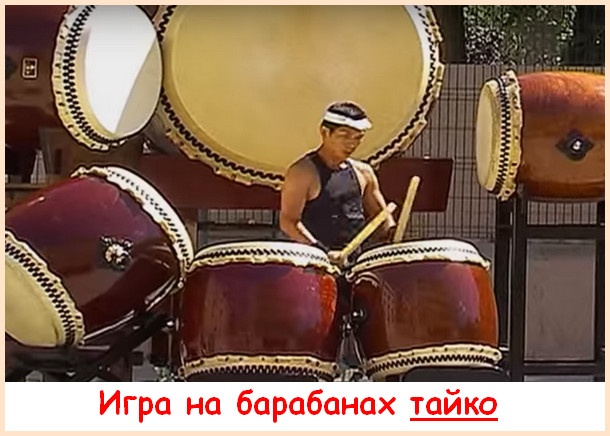

singing bowls – a feature of the musical instrumentation of Japan. There are practically no analogues anywhere. The sound of Japanese bowls has healing properties.
Singing Wells (Suikinkutsu) – Another unique tool, which is an inverted jug buried in the ground, over which water is placed. Through the hole in the bottom, the drops get inside and make sounds resembling a bell.
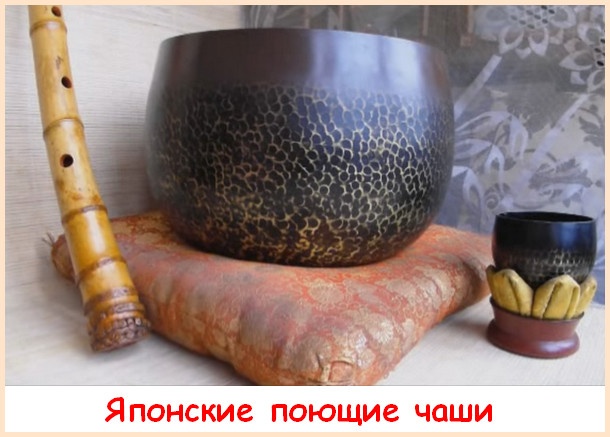

Stylistic features of Japanese music
The modal structure of Japanese music is fundamentally different from the European system. A scale of 3, 5 or 7 tones is taken as the basis. The fret is not major or minor. The intonation in the folk music of Japan is unusual for a European ear. Pieces may not have a regular rhythmic organization – meter, rhythm and tempo often change. The structure of vocal music is guided not by the pulse, but by the breath of the performer. That is why it is well suited for meditation.
The lack of musical notation is another feature of Japanese music. Before the Meiji era (that is, before the arrival of the European model of recording in the country), there was a system of notation in the form of lines, figures, signs. They symbolized the desired string, fingering, tempo and character of the performance. Specific notes and rhythm were not prescribed, and the melody was impossible to play without knowing it in advance. Due to the oral transmission of folklore from generation to generation, much knowledge has been lost.
A minimum of dynamic contrasts is a stylistic feature that distinguishes Japanese music. There are no abrupt transitions from forte to piano. Moderation and slight variations in dynamics make it possible to achieve expressiveness characteristic of the East. The climax in the Japanese tradition is at the end of the play.
Folk musicians and traditions
From the first mentions (8th century) of music in Japan, we learn that the government focused on studying the traditions of China and Korea. Special reforms were carried out that determined the repertoire of the gagaku court orchestra. The music of Japanese composers was not popular and was performed in less honorable concert halls.
In the 9th-12th centuries, Chinese traditions undergo changes, and the first national features appear in music. Thus, Japanese traditional music is inseparable from literature and theater. Syncretism in art is the main difference between Japanese culture. Therefore, folk musicians are most often not limited to one specialty. For example, a koto player is also a singer.
In the middle of the 19th century, the development of European musical trends began. However, Japan does not use Western music as a basis for the development of its tradition. The two currents develop in parallel without mixing. The preservation of cultural heritage is one of the main tasks of the Japanese people.
In parting, we want to please you with another wonderful video.
Japanese singing wells
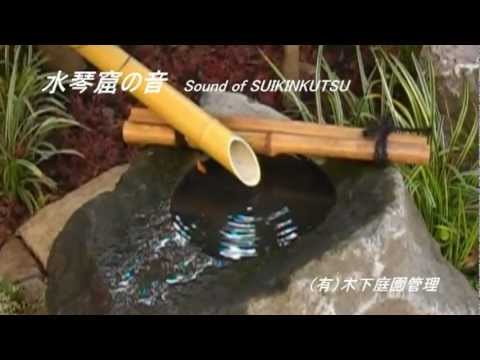

Watch this video on YouTube
Author – Sorpresa



